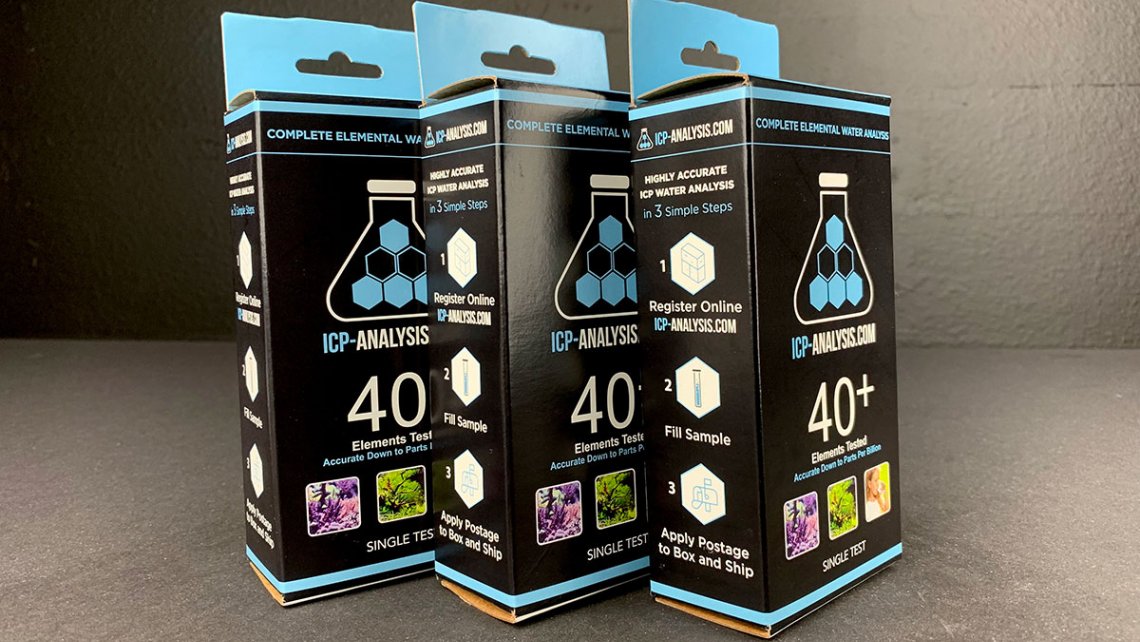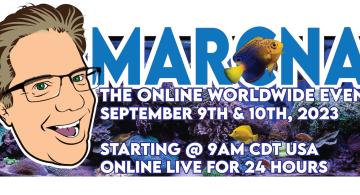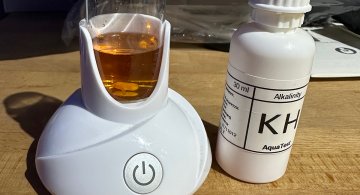ICP test results have arrived
For the past few years, several vendors have offered ICP testing. It's a process of blasting a water sample down to its ions and elements. Here's a quick description quoted from icp-analysis.com:
ICP stands for Inductive Couple Plasma. What it does is simple - it injects a sample, in this case salt water, into a plasma chamber that is approximately 10,000 degrees. This extreme temperature breaks everything in the sample apart into the basic elements. Every element is released at a specific wave length. We can then tell the concentration of the element by how much energy is released at that specific wave length. This process allows every element to be picked up from just a few drops of water.
While I've had access to do this, it was only last month that I finally sent in water samples to be tested. I had specific reasons, rather than just measuring it out of curiosity. My 400g reef has been running for 18 months without a water change, and I was looking forward to seeing what exactly was in my aquarium after that duration. It's a fully stocked reef, with a decent fish load and a lot of corals. The things that my tank receives regularly are RODI water for evaporation, Prodibio's for primary additives (Bioptim, Biodigest, Stronti+ and Iodi+), Magnesium Pronto, and Phosphate Rx (Lanthanum chloride based phosphate remover). And food of course, lots and lots of food. I expected that certain levels would be high, as things built up in the system. The main export of waste is the protein skimmer. Very little macro algae was culled during the 18 month period, primarily because about 90% of it died off during the first nine months, and it took time for that to grow back. I may have pulled a few handfuls to give macro algae to a couple of hobbyists in that time, but essentially my system has had the same water the entire time.
I mailed off three samples. 1) The 400g system. 2) The frag tank system as it is separate from my reef. 3) The Polytank's 250g of newly mixed up Royal Nature salt that I had recently made. Each sample was tagged, bagged, and boxed, and mailed to Colorado, and within two weeks I got an email notifying me that my results were ready to review. Also, the day I sent off my samples, I also tested each vessel's water so I'd have something to compare their numbers against.
Let's start with the elephant in the room. How did the 400g do?

The only one with a red marker was Iodine, which for some reason is quite a bit higher than any of their recommendations. Using the interactive website, I could compare my numbers against water that has been tested from Fiji, Hawaii, Florida, or St. Thomas. Let me address the main points:
Salinity 33.59ppt - my refractometer had measured 1.024 s.g. and their analysis came back with 1.0253 s.g.
Bromine is a little low at 37.02, but that is likely a component of most salt mixes. I've never seen it sold as an additive.
Calcium measured 377.32 and my kit measured 375ppm.
Potassium is about 40ppm too low, so this is one I actually could add. Potassium is credited for providing vivid coloration and higher end SPS keepers have recommending K dosing for some time.
Lanthanum measured quite low, and that's incredible to me. Considering that it is the primary method I use to control phosphate in my reef, I was expecting this to be a high number, that it was building up in my system. On the contrary, it was nice and low, lower than the four comparison sites I mentioned above. Nice!
Magnesium registered 1353.79, and my own test had it at 1350ppm.
Iodine was the high one. I'm not sure why, but I can stop dosing Iodi+ for a month or two, and then resume. Their recommendation is .06ppm
Phosphorus measured .1ppm, which is the same as my Phosphate test kit that read .1ppm. I know they aren't the same, but they are related.
Strontium was a little low compared to their suggested level, but was right around the same as the four target global areas (Fiji, St Thomas, Hawaii, & Florida).
Chlorine and Silicon were the strange ones to me. Chlorine measured a little lower than what other areas measure, and why would I have any measurement of silicon at all? Time to check my seams, right? lol Since we use Calcium chloride and Magnesium chloride, maybe that's part of the chlorine measurement; I'll have to find out more about that.
So what did I gain from this $30 test? I am reassured to know that Phosphate Rx (which I've trusted for over 10 years) is perfectly safe and not building up in my system; I found out that my Potassium level needs to come up, and that overall my reef had done very well despite zero water changes. Neat!
The next test was for the Frag System, which has constantly been a probematic aquarium. I don't give it nearly the attention it needs, obviously. It also didn't have a water change for the same 18 month period:

Quickly we can see there are four areas that are really an issue. Arsenic is up at dangerous levels. Bromine, Potassium and Strontium are all low. Salinity was spot on at 35ppt, Calcium was at 459ppm, and Magnesium was at 1437ppm which explains all the coralline growth in that tank. However, I think a few good sized water changes on that tank will balance things out quickly, correcting the numbers we are seeeing.
Lastly, here's the report that came from the new salt I was sent to try out: Royal Nature reef salt.

Everything on this sample looks good, the only red marker was for Sulfur which they deemed to be too low. Mixed at 1.0254 s.g., Calcium measured 366ppm, Magnesium measured 1206ppm, and Potassium was at 350ppm. I've already used 60g of the 250g I mixed up, and I plan to use the rest of that up with water changes on the frag tank, as well as one more on the main reef.
This was actually a satisfying experience. No major surprises, nothing to be embarrassed about either. Win win. :)
















